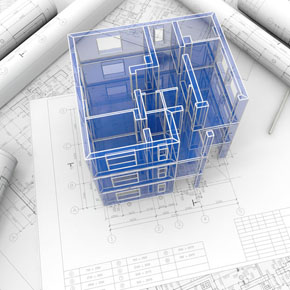
4 ways technology is changing health and safety
In a recent report, Virgin Media Business revealed that the construction industry is seeing huge benefits from investing in digital technologies. Data shows that those who have embraced new developments witnessed a 5.9% increase in revenue. This figures is expected to grow in 2017 and beyond.
It’s clear that digital technologies can have a positive impact on the construction industry. But how can they influence specific areas?
In terms of health and safety, the use of new technology has already made big improvements to both on-site environments and project management. Here’s a breakdown of 4 key ways that technology is making a difference…
Drones
In recent years, there has been a marked increase in the use of drones on construction sites, from planning through to completion. While drones can be an integral part of the design process, their most obvious benefit is their ability to generate detailed safety records, ensuring that the project meets HSE standards at all stages of the build.
Before construction begins, drones can be used to survey job sites. This is a quick and cost-effective way to get a project started, without putting employees on location before the risks have been assessed.
In some large-scale projects, drones are also being used to offer a ‘birds eye’ view of sites in progress; this method is particularly useful when working on multiple job sites or expansive areas, as it allows employers to monitor health and safety more frequently and extensively, highlighting breaches in protocol and ensuring a better work environment for all.
BIM
Business Information Models (BIMs) are a great example of how technology can be used to indirectly improve on-site health and safety.
By providing a digital 3D visualisation of a project as a shared resource for workers, employers ensure greater understanding of the construction. This approach to project management allows for better awareness of the overall build and clearer communication of problems and risks in the early stages. As a result, employers see fewer mistakes and an improvement to the general work environment.
VR
Whilst drones and BIMs can be used to survey and map job sites prior to construction, VR (virtual reality technology) offers an opportunity for experts to virtually explore the area at ground level, identifying potential risks. This enables safety procedures to be put in place before the site is opened.
What’s more, VR can also be used as a training method. With access to headsets, employees can virtually walk through the locations, rather than merely seeing a digital model on a screen. This ultimately increases awareness of risk factors before workers encounter them.
Another benefit of VR technology is that it allows for simulated circumstances, such as changing weather conditions. By encouraging workers to experience these challenges through the simulation, employers ensure that they are fully equipped to deal with all potential on-site risks.
On-Site Monitoring
Arguably the most significant technological development in construction is the introduction of on-site monitoring devices.
In 2016, SmartSite launched a new product that transforms on-site health and safety. While traditional noise and pollution monitors rely on human resources to measure levels, log data and assess results, this invention relies entirely on technology. When placed on location, the device monitors employee exposure to harmful factors, logs data automatically to the cloud, and signals to workers when mitigation is needed.
Like drones, this kind of technology allows employers to keep detailed and regularly-updated safety records, which will eventually improve health and safety processes across the construction industry.
Author: On-Site Support
Latest news

19th April 2024
ASSA ABLOY: Access solutions can impact sustainability performance across the full life-cycle of a building
Embedding sustainability within any organisation requires a broad, strategic perspective. Scrutiny should include the physical infrastructure itself: According to the IEA, buildings consume around 30% of global energy*. ASSA ABLOY has more…
Posted in Access Control & Door Entry Systems, Architectural Ironmongery, Articles, Building Industry News, Building Products & Structures, Building Regulations & Accreditations, Building Services, Case Studies, Doors, Facility Management & Building Services, Information Technology, Research & Materials Testing, Retrofit & Renovation, Security and Fire Protection, Sustainability & Energy Efficiency, Video of the Week
19th April 2024
British weather doesn't dampen spirit for new HMG Garden Paint
Despite one of the wettest starts to the year on record, customers are starting to plan for brighter days with HydroPro Garden Paint from HMG Paints.
Posted in Articles, Building Industry News, Building Products & Structures, Garden, Innovations & New Products, Paints, Paints, Coatings & Finishes, Restoration & Refurbishment, Retrofit & Renovation, Site Preparation, Sustainability & Energy Efficiency, Waste Management & Recycling
18th April 2024
Abloy UK showcases new digital portfolio at The Security Event 2024
Abloy UK is set to unveil its latest line-up of access control systems at The Security Event 2024, welcoming guests to explore its cutting-edge electromechanical and digital solutions on stand 5/F50.
Posted in Access Control & Door Entry Systems, Architectural Ironmongery, Articles, Building Industry Events, Building Industry News, Building Products & Structures, Building Services, Doors, Exhibitions and Conferences, Facility Management & Building Services, Health & Safety, Information Technology, Retrofit & Renovation, Security and Fire Protection
18th April 2024
Strand is a Failsafe Choice for Emergency Exit and Panic Hardware
In times of emergency, you’re in safe hands with Strand Hardware. Although there are many considerations for building specification, few decisions can be as critical as selecting the right emergency exit/panic hardware.
Posted in Access Control & Door Entry Systems, Architectural Ironmongery, Articles, Building Industry News, Building Products & Structures, Building Services, Doors, Facility Management & Building Services, Health & Safety, Restoration & Refurbishment, Retrofit & Renovation, Security and Fire Protection
 Sign up:
Sign up: 